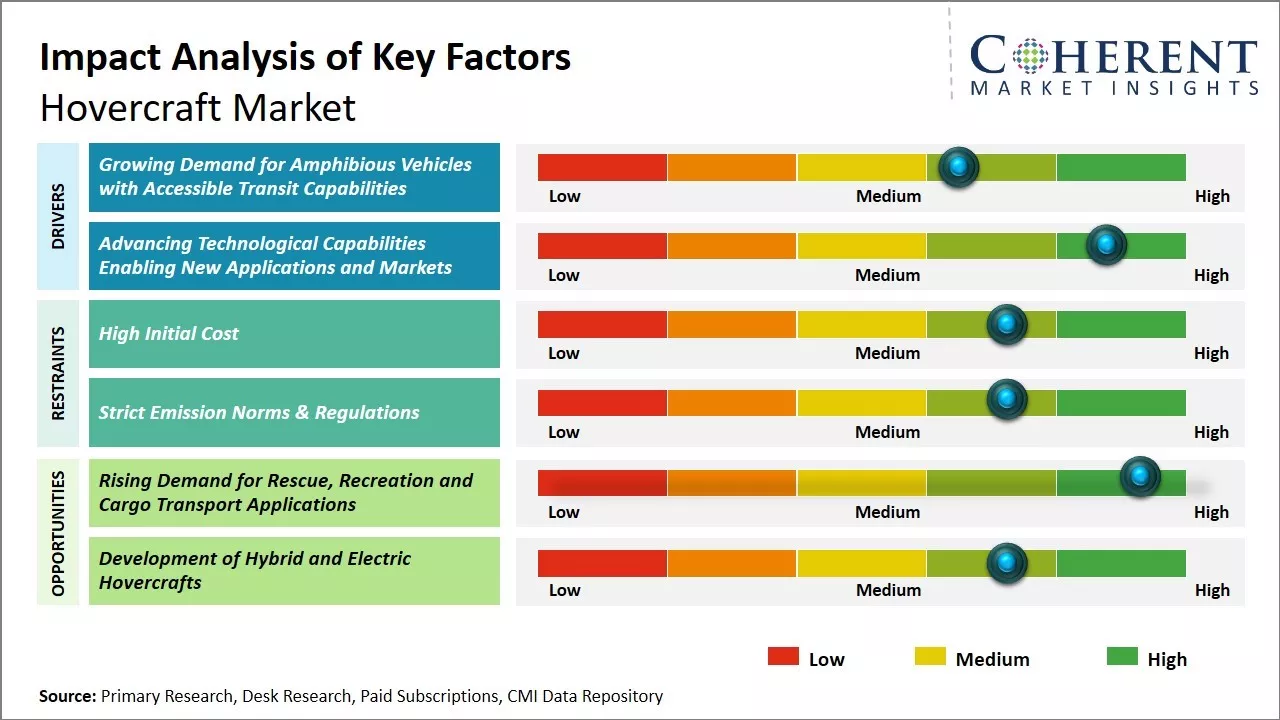Global hovercraft market is estimated to be valued at USD 282.6 Mn in 2025 and is expected to reach USD 408.6 Mn by 2032, growing at a compound annual growth rate (CAGR) of 5.4% from 2025 to 2032.

To learn more about this report, Request sample copy
Global hovercraft market is expected to witness positive growth over the forecast period. Increasing demand for high speed water transportation and the adoption of hovercrafts for military applications are expected to drive the market growth. The advancements in hovercraft design to improve performance and efficiency can aid growth of the market. However, the high operational costs associated with hovercrafts may hamper market growth to some extent over the forecast period. Overall, increased R&D investments by leading players to develop new technologies is likely to create new opportunities for the expansion of the hovercraft market.
Growing Demand for Amphibious Vehicles with Accessible Transit Capabilities
As the global population rises and urbanization continues at an accelerated pace, efficient transportation solutions that can overcome geographic barriers will have huge demand. Hovercraft technology allows seamless transit across land and water, filling an important mode of transport suited for diverse terrain. With their ability to travel over marshes, swampland, and coastal regions inaccessible to other vehicles, hovercraft offer a flexible option for transport, emergency response, and recreational activities.
Traditional modes of transit struggle to provide accessibility in areas divided by water or wetland regions. Hovercraft have the unique ability to connect communities separated by natural barriers like rivers, lakes, or coastal areas more efficiently. As urban populations grow and the demand for transportation between cities and towns increases, hovercraft can help to meet these connectivity needs. Their amphibious qualities make hovercraft an appealing choice for routes serving port cities, coastal suburbs, or areas with seasonal water level fluctuations. Where traditional ferry systems may not be economically viable, hovercraft can fill the gaps with an affordable alternative.
Beyond mobility needs, hovercraft also allow expedited access for emergency responders. Being able to rapidly deploy hovercraft for medical evacuations, search and rescue operations, or disaster response gives these vehicles strategic value. Their amphibious driving capabilities let hovercraft traverse otherwise impassable terrain to reach remote or isolated areas. As weather events become more unpredictable with climate change, the need for emergency access across diverse geographies is rising.
For instance, Griffon Hoverwork offers Hovercrafts - 2000TD Hovercraft, 2450TD Hovercraft, and 8100TD Hovercraft that are used in amphibious operations.
Joining thousands of companies around the world committed to making the Excellent Business Solutions.
View All Our Clients